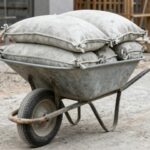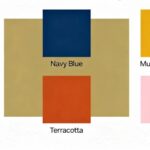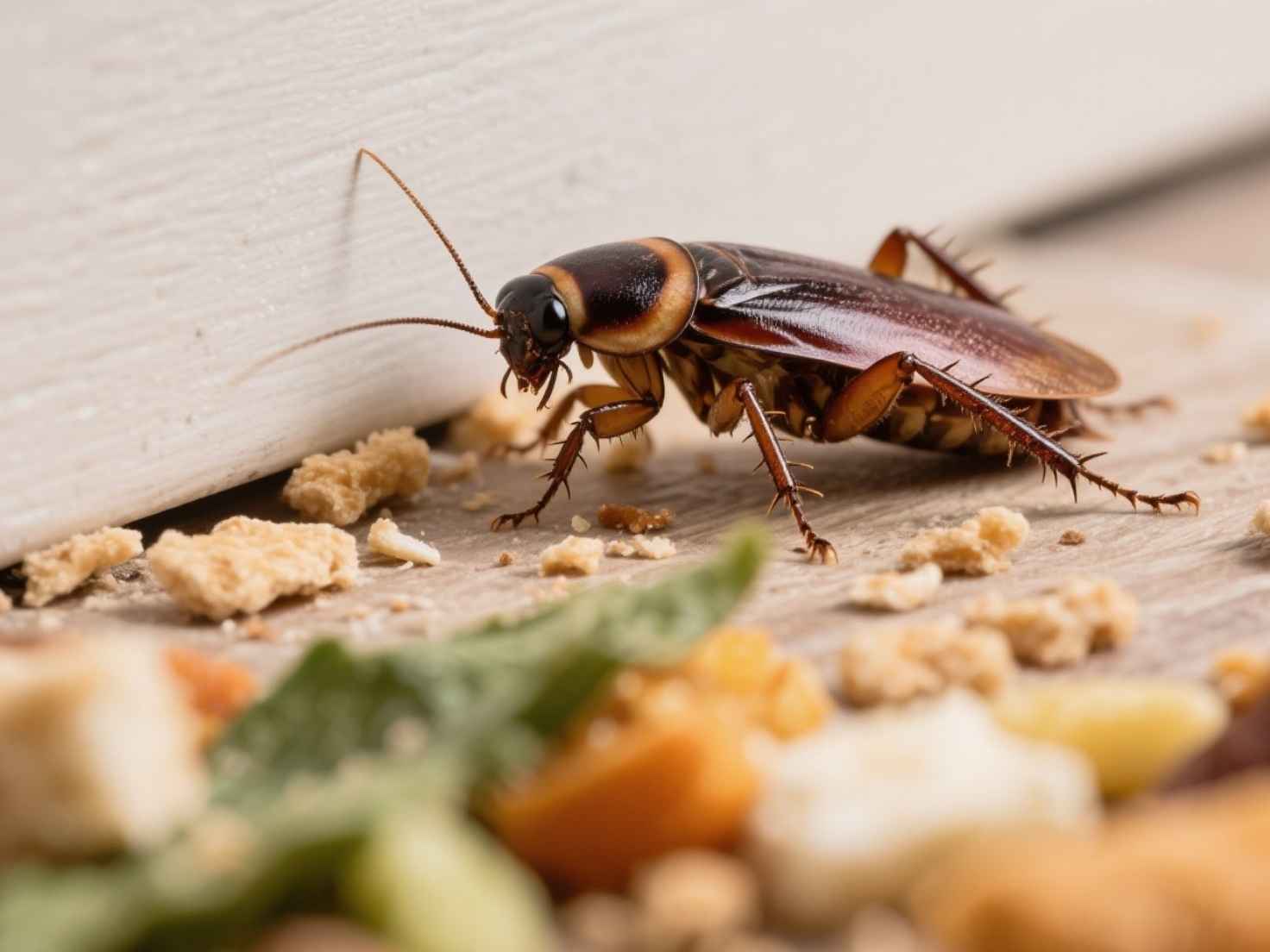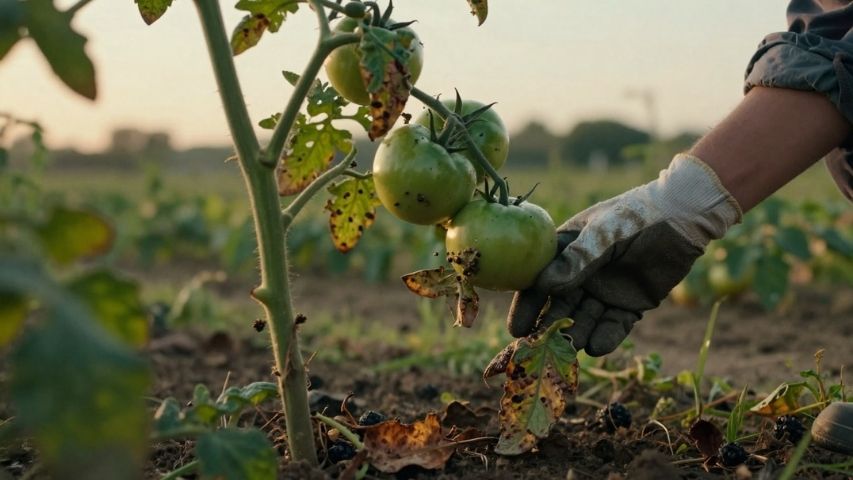Seeing a cockroach in your home can be unsettling. These tough pests seem to appear out of nowhere and can survive in even the most extreme conditions. One reason they stick around is their diet, since they eat almost anything. Learning what cockroaches eat is the first step to making your home less appealing to them.
This guide explains both the typical and unusual foods that cockroaches eat. You’ll find out what draws them to your home, how they find food, and simple ways to get rid of what they eat. By the end, you’ll know how to make your home roach-free.
The Unsurprising Items in a Cockroach’s Diet
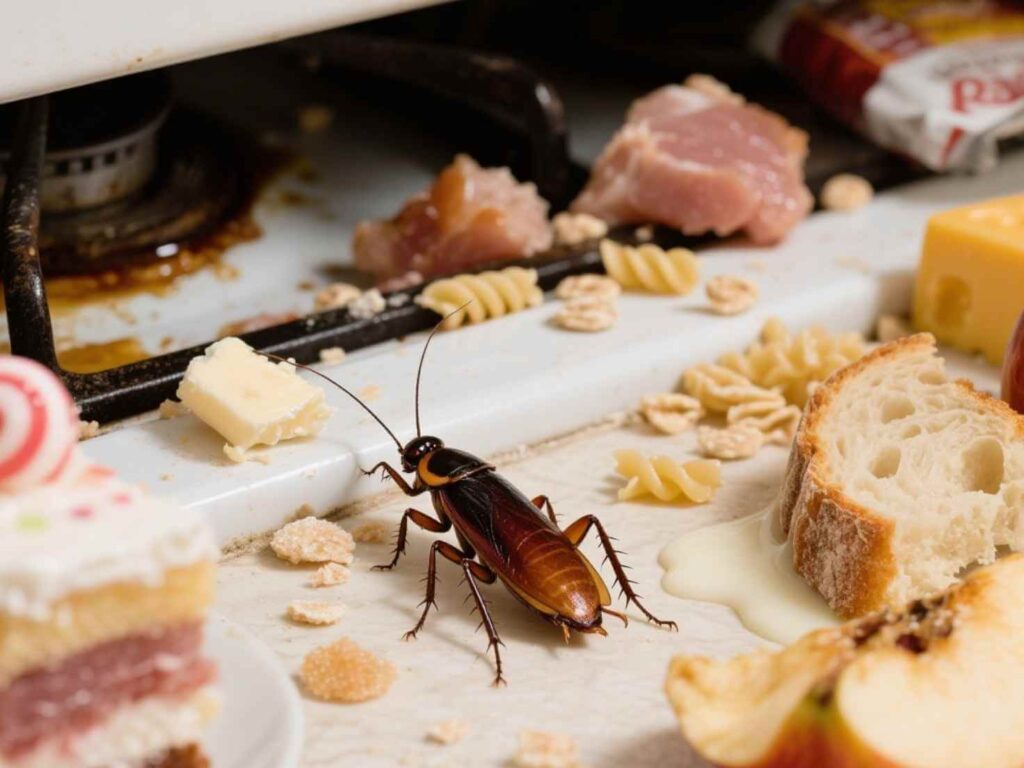
Cockroaches eat both plants and animals, making them true scavengers. In most homes, they go after the same foods we like, especially sweets, starches, and meats.
Here are some of the most common foods that attract cockroaches:
- Sugary foods: Roaches love spilled soda, fruit juice, sugar, and crumbs from cakes and cookies.
- Starchy foods: Bread crusts, pasta, cereal, and flour are all meals for cockroaches.
- Residue and meats: Leftover grease splatters on a stovetop, meat scraps, and even small bits of pet food are highly attractive.
- Cheese and dairy: Pieces of cheese or spilled milk can also bring cockroaches in.
- Ripe or rotting fruit: Fruit left out on the counter, especially if it’s getting too ripe, is a big draw for cockroaches.
Because they are most active at night, cockroaches often feast on the tiny food particles we leave behind after a long day. A few crumbs on the floor or a small spill that wasn’t wiped up can be enough to sustain an entire roach population. This is why a clean kitchen is your first line of defense against an infestation.
The Shocking Things Cockroaches Will Eat
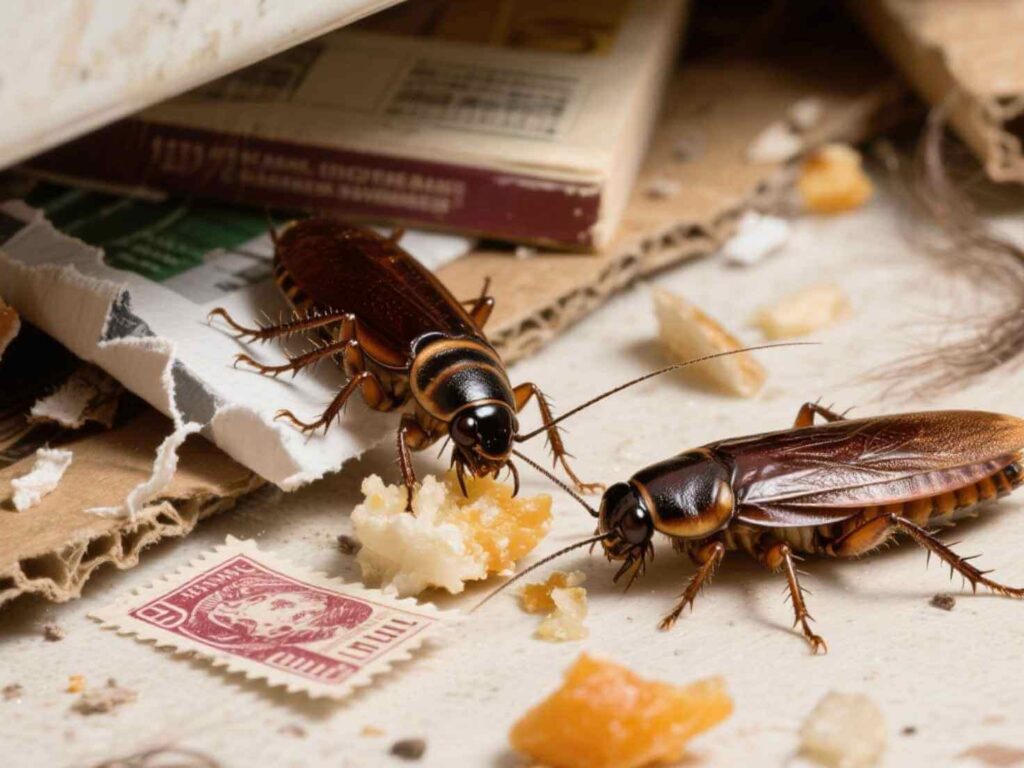
Cockroaches like the leftovers in your kitchen, but if food is hard to find, they’ll eat almost any organic material. This ability to adapt is what makes them such tough pests.
Some of the more unusual items in a cockroach’s diet include:
- Paper and cardboard: Cockroaches can digest cellulose, which means books, cardboard boxes, wallpaper glue, and even stamps are on the menu. They are particularly drawn to items that have absorbed moisture or food spills.
- Hair and dead skin: Flakes of skin, nail clippings, and hair give cockroaches protein. That’s why you might see them in bathrooms, even if there’s no food around.
- Leather and fabric: Cockroaches can eat things like belts, book covers, and clothes, especially if they have sweat or food stains.
- Decaying matter: In nature, cockroaches help break down dead material. Indoors, this means they’ll eat rotting food in the trash, dead insects, and even other dead cockroaches.
- Feces and sewage: Cockroaches that live in sewers or pipes will feed on sewage and other waste, which is a primary reason they can transmit harmful bacteria into our homes.
- Soap and toothpaste: Some bar soaps have fats, and toothpaste has sugar, both of which can attract hungry cockroaches.
Because cockroaches eat so many things, just cleaning your kitchen may not be enough. Storing paper goods properly and fixing plumbing problems are also important.
How Cockroaches Find Food
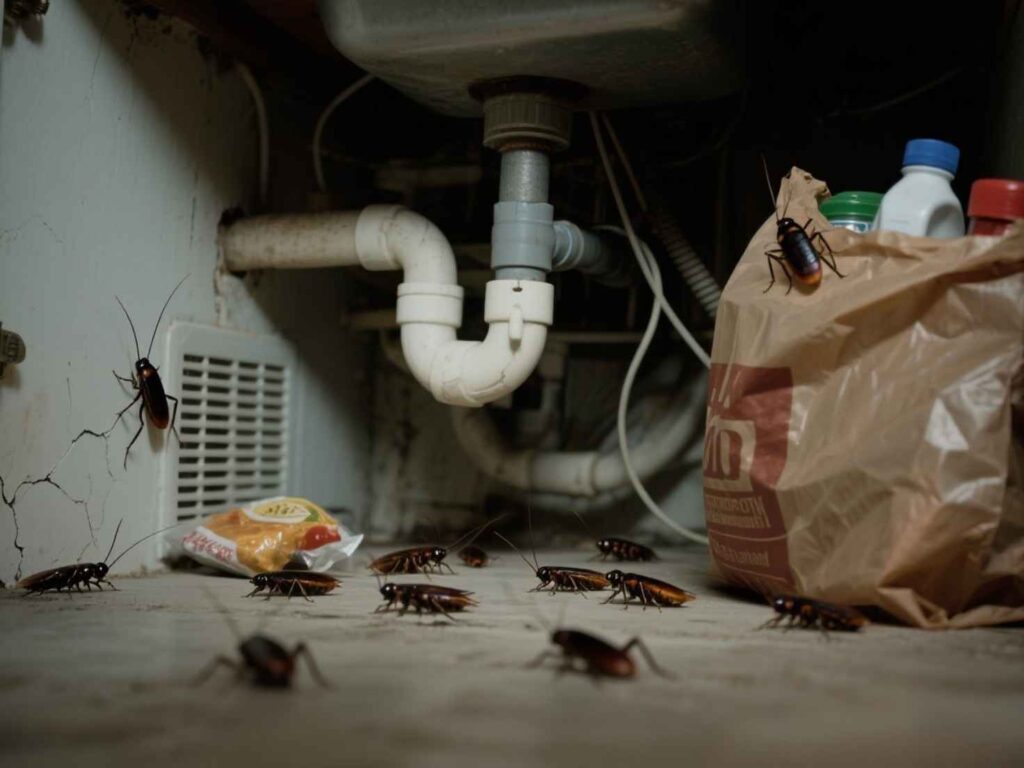
Cockroaches are great at surviving. Their sensitive antennae help them find even tiny traces of food and water from far away. They come out at night to look for food, when it’s safer for them. enter homes through cracks in the foundation, gaps around pipes, vents, or by hitching a ride in grocery bags and boxes. Once inside, they seek out dark, moist, and undisturbed areas to hide during the day. Common hiding spots include:
- Under sinks and appliances
- Behind refrigerators and stoves
- Inside cabinets and pantries
- In wall voids and crawl spaces
- In basements and attics
At night, cockroaches leave their hiding spots to look for food. Because they can flatten their bodies, even tiny cracks or gaps can let them reach your kitchen counters.
Keeping Cockroaches Out of Your Kitchen
Now that you know what cockroaches eat, you can take strategic steps to cut off their food supply and make your Home less hospitable.
1. Clean Up Crumbs and Spills Immediately
The best way to stop a roach problem is to keep your home very clean.
- Wipe down countertops, tables, and your stove after every meal.
- Sweep or vacuum floors daily to pick up crumbs.
- Clean up spills as soon as they happen.
2. Store Food in Sealed Containers
Don’t make it easy for cockroaches to get to your food.
- Store pantry items like cereal, flour, and sugar in airtight glass or plastic containers.
- Keep fruit in the refrigerator instead of on the counter.
- Never leave food, including pet food, out overnight.
3. Manage Your Trash
Your trash can is a feast for pests.
- Use a trash can with a tight-fitting lid.
- Take out the trash every night, especially if it contains food scraps.
- Rinse out food and drink containers before throwing them in the recycling bin.
4. Eliminate Water Sources
Cockroaches can live for a month without food, but only about a week without water.
- Fix leaky faucets and pipes promptly.
- Don’t leave pet water bowls out overnight.
- Dry your sinks and bathtubs before going to bed.
- Use a dehumidifier in damp basements or crawl spaces.
Take Back Your Home
Knowing what cockroaches eat is important because it shows how resourceful they are. They’re drawn to the food we leave out, but they can survive on things we’d never eat. By keeping your home clean and cutting off their access to food and water, you can make your space much less attractive to them.
If you’ve tried these steps and still see signs of cockroaches, it might be time to call a professional. Pest control experts can find where roaches are getting in, locate their nests, and use targeted treatments to get rid of them for good.



